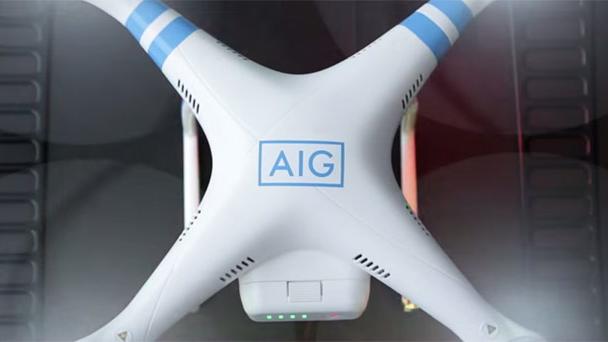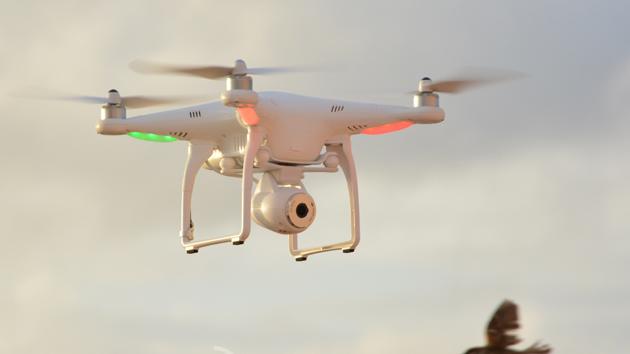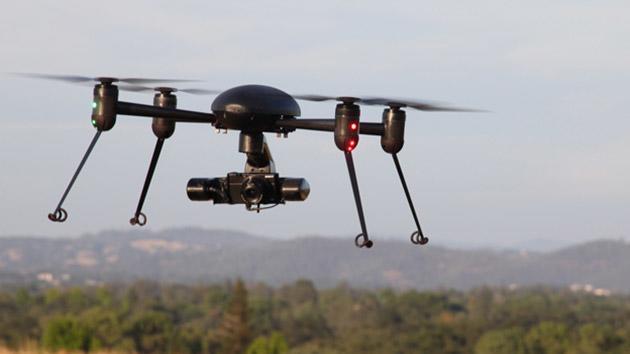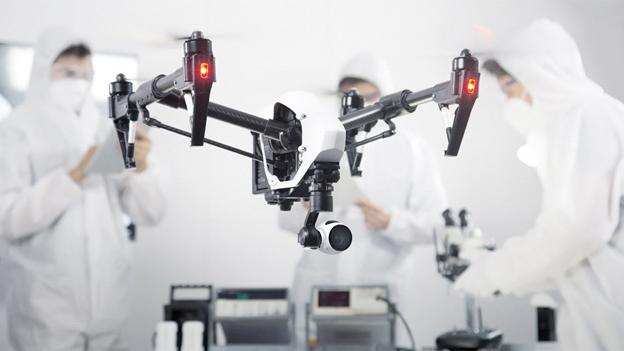FAA
Latest

New FAA system can track twice as many flights at once
Whoever said "it's the journey, not the destination" obviously lived in a time before air travel. But maybe, just maybe, the Department of Transportation's implementation of the En Route Automation Modernization (ERAM), the "backbone" of the NextGen air-traffic system, could change how we feel about getting on a flight. There are a few things making up ERAM: performance based navigation, automatic dependent surveillance-broadcast (ADS-B) and data comm.

To keep a Boeing Dreamliner flying, reboot once every 248 days
The 787 Dreamliner has been plagued with battery woes since its early days, to the point where the Federal Aviation Administration kept it from flying the skies in the past. And while those technical difficulties are apparently taken care of, Boeing's flagship airliner could be on the way to more trouble soon. According to the FAA, there's a software bug in the 787 Dreamliner that can cause its electrical system to fail and, as a result, lead to "loss of control" of the plane. But why? The FAA says this is triggered by the aircraft's electrical generators, which could give out if they have been powered on continuously for over eight months.

Amazon can finally test its delivery drones in the US
Amazon's drone team must have heaved a collective sigh of relief: the company only had to wait a few weeks for the FAA's approval this time. The agency has officially granted Amazon's request to test its new UAVs in the US on Wednesday, April 8th. If you recall, the company's previous request spent six months in limbo, forcing it to take all testing overseas. By the time the agency allowed the drone noted in the first application to be flown within the US, the machine was already obsolete, and Amazon was already using a new model.

FAA allows AIG to use drones for insurance inspections
The Federal Aviation Administration has been rather stingy when it comes to giving companies the OK to test, let alone employ, drones. After getting permission this week, AIG joins State Farm and USAA as insurance providers with exemptions that allow them to use the UAVs to perform tasks that are risky to regular folks -- things like roof inspections after a major storm. In addition to keeping its inspectors safe, the company says drones will speed up the claims process, which means its customers will, in theory, get paid faster. "UAVs can help accelerate surveys of disaster areas with high resolution images for faster claims handling, risk assessment, and payments," the news release explains. "They can also quickly and safely reach areas that could be dangerous or inaccessible for manual inspection, and they provide richer information about properties, structures, and claim events."

FAA makes it faster and easier to secure permits for small drones
Even the FAA itself knows it needs to speed up its notoriously slow drone approval process. That's why it has debuted a new rule that will quickly grant permits to companies that promise to adhere to certain restrictions. All applicants whose drones weigh 55 pounds or less will get a "blanket flying permission," so long as they swear never to fly their machines above 200 feet. They also have to assure the agency that they will only fly their drones during daytime and nowhere near airports. The FAA might finally be able to demolish its backlog of more than 400 permit applications with this new system in place. More importantly, it will allow the agency to breeze through future ones and prevent terrible delays like what happened to Amazon.

Reuters: FAA to ease approval process for commercial drones
The Federal Aviation Administration wants to make it easier to operate commercial drones, it'd seem. The idea is to make it so companies that are already are exempt from the drone ban don't have to get a new certificate of authority for additional use case scenarios for UAVs, according to Reuters' sources. This could happen as early as next week Tuesday's congressional hearing on drones and, if approved, it might not be long before the sky gets a little busier. So far the amount of exemptions is slim thanks to the slow approval process. Of the over 750 requests, only 48've been awarded and the companies that have them (including State Farm's auto insurance wing and Chevron) would have more leeway in terms of what their fleets can do should the changes come to pass. It isn't quite the ban getting completely reversed, to be sure, but it's another step to speed up the typically lethargic wheels of bureaucracy.

FAA gives Amazon the OK to conduct drone tests
After threatening to take its drone tests elsewhere, the FAA granted the online retailer permission to test its unmanned aircraft. If you'll recall, Bezos & Co. weren't interested in leveraging any of the government-approved test sites for drone trials, wanting instead to fly near its Seattle R&D facility. The "experimental airworthiness certificate" awarded today allows Amazon to make test flights at 400 feet or below, so long as the unmanned aircraft stays within the pilot's sight. What's more, any testing must be done during the day, with a private pilot's certificate and medical credentials required for anyone behind the controls. As is the case with this type of permit, the FAA requires monthly reports that include the number of flights, pilot time, any issues that arise, if there's a loss of communication and if the pilot has to deviate from the air traffic controllers' cues. Back in January, the FAA teamed up with CNN to look into the use of drones for news coverage, so we could certainly see even more of the flying machines take off soon. Of course, we'll still have to wait a while to receive packages via drone, but at least Amazon is getting to test in its own backyard.

The FAA doesn't like you posting drone footage on YouTube
Thinking of posting that sweet drone footage online? You might want to be careful about it. The Federal Aviation Administration is telling at least one hobbyist, Jayson Hanes, that his aerial robotic videos run afoul of regulation because they're on YouTube. Hanes is allegedly flying "commercially" (and thus faces more stringent rules) due to his choice of site, strongly implying that YouTube's ads are at fault. If so, it's a sketchy argument. Hanes hasn't made any money from his clips, and there's no obligation to collect revenue on Google's video service.

NASA's air traffic control system for drones is progressing nicely
Last month, the FAA announced regulations for piloting drones, requiring you to keep your eyes on the unmanned aircraft at all times. Looking to help ease those rules, Excelis is developing an air traffic control system for drones, and it's nearly ready for trials at the Federal Aviation Administration's approved test sites. The low-altitude monitoring system keeps tabs on the compact aircraft, which would, in theory, allow them to be used remotely to deliver packages or perform inspections. The company has been working with NASA to build its software, leveraging a data stream it already beams to the FAA with 650 ground stations to track manned aircraft. Current tech will be updated to include low-flying drone locations, speeding up the timeline for the requisite trials. Excelis plans to begin testing with the FAA later this summer to show real-time terrain, weather and airspace info for pilots on tablets and laptops.

Government finds the FAA is vulnerable to hacks
On the scale of extremely disconcerting government revelations, this isn't PRISM, but damn if it isn't alarming. The Government Accountability Office (GAO) released a scathing report on the Federal Aviation Administration's (FAA) air traffic control systems. The FAA is basically just asking to be hacked thanks to its lackadaisical approach to security and software updates. Things are so bad, that relying on servers that have past their "end-of-life" date is probably the least concerning revelation made by the GAO. The government also found that FAA employees were sharing passwords through unencrypted communications channels, and had failed to patch out of date software with three-year-old security flaws.

Proposed commercial drone rules would ban robotic couriers
If you were worried that the Federal Aviation Administration would require a pilot's license before you could fly a drone for professional reasons, you can relax... well, sort of. The FAA has published its proposed commercial drone rules, and they're a bit more lenient than some had feared. The good news? You wouldn't need a license to fly any drone under 55 pounds; instead, you'd take an "aeronautical knowledge" (read: airspace rules) test every two years and get an operator certificate. And if you're flying model airplanes that fit existing criteria, you'd only be bound by current laws.

DJI no longer lets you fly its drones in Washington, DC
' DJI really, really doesn't want to see its drones in the news for the wrong reasons. Just a day after the world learned that one of its robotic vehicles crash-landed at the White House, the company is pushing out a "mandatory" firmware update for its Phantom 2 drones that prevents you from flying anywhere within a 15.5-mile radius of downtown Washington, DC. The move is practically necessary given FAA guidelines barring unmanned vehicles from flying in the area. However, it also means that there's no longer much point to owning a DJI drone in the US capital -- unless you refuse to install any upgrades or regularly head out of the city, you now own a very expensive paperweight. [Image credit: US Secret Service]

CNN teams with the FAA to make drones work for news gathering
CNN has been looking into the prospect of using drones for news reporting for months, but it now has an important ally in its corner: the FAA. The two organizations have forged a research agreement that will create an official framework for UAV use by the American press. CNN hopes this will move the media beyond "hobby-grade equipment" (instead, think pro drones like the DJI Inspire 1) and establish a safe way to produce quality news footage with robotic aircraft. There's no estimate for when this would happen, but CNN, its existing partner Georgia Tech and the FAA have already started coordinating their efforts. You may not have to wait too long before your local news network is covering breaking stories with a swarm of unmanned machines.

FAA's new drone safety campaign reminds you not to be stupid
The Federal Aviation Administration was woefully underprepared for the rise of inexpensive drones, but now the agency is finally stepping up its safety game in preparation for a drone-heavy holiday season. The FAA, together with several unmanned aircraft vehicle (UAV) organizations, is kicking off a new safety campaign for newbie pilots dubbed "Know before you fly." It's filled with plenty of the same advice we've heard from the FAA over the past few years -- keep your UAV under 400 feet, don't fly near planes or other aircraft, and generally don't be a doofus -- but it's the first time the agency is making a concerted effort to educate consumers. The campaign, which includes a (poorly produced) video, a fact-filled website, and documentation for retailers to hand out, is mainly targeted at recreational drone users. The agency's widely criticized ban on commercial drones is still in effect, though it has opened the door for a few filmmakers, and it's currently fielding applications to use UAVs from other private companies.

Amazon threatens to take its delivery drone testing overseas
Amazon things, delivered by drone! The possible future! The project was first teased on 60 Minutes a little over a year ago, and while there's been some movement, it's apparently not progressing fast enough. Now Amazon's taken the Federal Aviation Agency to task, and told the FAA (and the media) exactly why. The aggrieved letter totals seven pages, plus appendices, as it's actually the part of the exemption application for Amazon's drone experiments. "Without approval of our testing in the United States, we will be forced to continue expanding our Prime Air R&D footprint abroad," Amazon's VP of global public policy Paul Misener, wrote in the letter. The company now aims to shift more of its drone testing outside of the US, unless regulators are able to give permission for the company's outdoor trials soon.

Boeing's Dreamliner batteries caught on fire for a few reasons
Curious about what the official word regarding the Boeing Dreamliner's faulty battery is? Of course you are. The National Transportation Safety Board says that the reason for the non-fatal fire was due to "deficiencies in the design and certification process," and has a few fingers to point. The board says that Boeing itself is at fault, calling its safety assessments of the lithium-ion units insufficient. Yuasa, the battery manufacturer, isn't free from blame either. As The Wall Street Journal notes, Yuasa's production process apparently allowed for defects that could cause short-circuiting in the battery's internal cells, and the final battery design was actually different than the one tested and certified. The NTSB goes on to call out the Federal Aviation Administration for its lack of oversight regarding the outsourcing of components in the Dreamliner as well.

FAA report shows spike in drone-related air traffic incidents
There's a reason why unmanned aerial vehicles (UAVs) aren't permitted to fly beyond 400 feet and within a five-mile radius from airports: they could cause a disaster if they smash a plane's windshield or get sucked into its engine. Unfortunately, some drone operators don't follow protocol, and their numbers have only increased since June 1st this year. According to a document that the FAA has just released, pilots and air traffic controllers have reported 175 incidents in which a drone was seen flying in restricted airspace since mid-2014. Out of those 175 incidents, 25 describe drones almost colliding with either a plane or a helicopter.

Engadget Daily: HTC RE review, Redbox increases rental pricing, and more!
It's a periscope! It's an elbow macaroni! Nope, it's the RE, HTC's $200 handheld camera. Sure, it's super fun and really easy to hold, but if pro-level action shots are what you're after, this noodle-shaped shooter isn't for you. That's not all we have on deck, though -- read on for the rest of our news highlights from the past 24 hours.

The FAA wants you to have a pilot's license to fly commercial drones
If you're planning to shoot your next movie using a drone, beware: you may need to meet some stringent conditions to stay in the Federal Aviation Administration's good books. Sources tell the Wall Street Journal that the agency will propose commercial drone rules that require a conventional pilot's license. Yes, you may need to have flown manned aircraft for dozens of hours to even think of controlling a UAV for cash. You'd also have to fly only during daylight, stay under 400 feet and remain within sight of your craft, so any hopes of high-altitude night shots would go out the window. And these rules would apply to any drone weighing 55 pounds or less; small, easy-to-fly vehicles like 3D Robotics' Iris+ and DJI's Inspire 1 would be subject to the same demands as larger, more complex models.

JFK Airport has a drone problem
If you're wondering why the FAA is taking its time approving drones for commercial use, here's a good example. Two separate flights reported near-misses with a drone at John F. Kennedy airport, with one of the pilots saying it came within "several feet" of the wing. Both sightings occurred within minutes of each other, though a sweep of the area by a police helicopter turned up no sign of the rogue device. A Jet Blue crew also reported a drone a few days earlier at JFK, telling ATC "it looks like one of those unmanned drones is flying right on the final (approach)." A drone strike by a passenger jet might not sound like a big deal, but FAA investigators pointed out that one can easily get sucked into an engine and bring an aircraft down.









